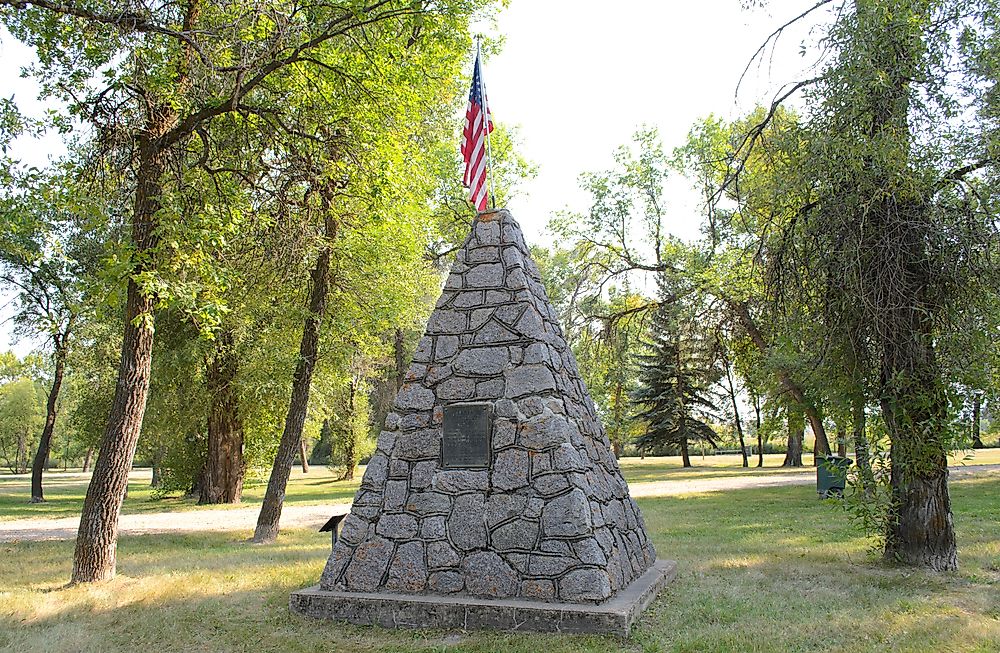What Was the Bozeman Trail?

The Bozeman Trail was a temporary name for an ancient route, one that is still in use today.
Many historians note how the story of the Bozeman Trail is an example of many important trends in the history of the American West.
The spur was scouted as a shortcut for wagon trains on their way to the goldfields discovered on Grasshopper Creek in 1862. In use by prospectors, settlers, and military between 1864 and 1868, the trail was actually a portion of the ancient North-South route of Native American people and cut through vital hunting grounds of the Lakota, Cheyenne, and Arapaho tribes at the time.
Expensive stagecoaches and steamboats were already available in Idaho Territory in the 1860s, and wagon trains had been making the trip west on the Oregon Trail for decades. However, the call of gold was strong. Often strapped for cash, speculators looked for the fastest, cheapest transport possible, even when that meant risking dangerous terrain and encroaching on tribal lands.
The Search for a Golden Trail
Having struck out in their search for gold, the idea of a “Golden Trail” that would shave several weeks of travel off of the established overland route was itself a business venture. Looking to make money off of miners willing to pay for a superior trail, John Bozeman made his first attempt to find a faster route to the mining center of Virginia City in the summer of 1863. After several setbacks, he eventually got his party across the Little Bighorns via what is now known as Bozeman’s Pass.
The next year, Bozeman tried again to establish his shorter route to the Montana goldfields. Setting his wagon train off after that of Jim Bridger, the smoothest part of this trip was spent following the path set by the famous mountaineer. On his own, Bozeman struggled. He lost his way and, not being able to find a suitable approach to a river, ended up having to lower wagons one by one down a steep bluff. It was the last time Bozeman would lead an expedition along the trail named after him.
By the end of 1864, approximately 15,000 people had used the Bozeman Trail journeying to the Gallatin Valley, most of them looking for gold. There would have been more, but people thought it was too dangerous. Part of this was the hazardous landscape, with alkaline water and long stretches in dry areas with too-little grass for the livestock. But more importantly, Bozeman’s Trail cut directly through tribal lands.
Native American-Settler Relations
While not all interactions between settlers and Native Americans on the Bozeman Trail were hostile, there had been enough violence that the government closed the trail for civilian use in 1865. There was a call for the establishment of forts to protect the settlers. In these first years after the Civil War, back East the US government was turning its attention to solving the so-called “Indian Troubles.”
In August of 1865, Gen. Patrick Connor attacked an Arapaho village on Tongue River, killing 63 warriors, many women and children, and largely destroying the settlement. Then, during a Peace Conference held in Fort Laramie in the summer of 1866, troops arrived as talks were underway. Red Cloud and other tribal leaders declared their unhappiness with the invasion into their lands and gathered their strength to strike back.
Through most of 1866, the Bozeman Trail was reopened and could be used, but only with permission and usually with military escort protection. With the gold running out, most of the traffic on the trail were merchants providing the necessary goods and services needed by the miners. While the forts were relatively safe, the guerilla attacks by the Arapaho, Lakota, and Cheyenne were a known danger.
Battle of the-100-in-the-Hands and the Trail Today
There is evidence that Captain Fetterman and the party going out Fort Ellis for the last wood run of the season feared trouble. However, while they were alert for the small-scale raids they had experienced before, the military was unprepared for the scale and tactics used by Red Cloud and his warriors that day. On December 21, 1886, 81 soldiers were lost in the Fetterman Fight, or the Battle of the-100-in-the-Hands. It was Red Cloud’s greatest victory, and such an embarrassment to Colonel Henry B. Carrington that he spent his entire life trying to rebuild his reputation.
The Bozeman Trail was primarily a military road in the aftermath of this and later battles in Red Cloud’s War. However, times were changing. The completion of the regional railroad in 1868 replaced the wagon train as the quickest and cheapest mode of transportation. A peace agreement including the condition that forts along the Bozeman Trail be abandoned on April 29, 1868; Red Cloud had made it clear he would not sign otherwise. With settler interest in the trail all but gone, the military agreed. The language of the treaty created “unceded Indian territory,” where the Sioux could move unopposed and follow their traditional ways of hunting, for “so long as long as there was game to justify the chase.” The game was declared depleted, and tribal rights revoked in 1876.
Well integrated into our modern highway system, the Bozeman Trail continues to be a part of the story of the American West. You can even still travel some of its route by taking Interstate-90 between Bozeman, MT and Sheridan, WY.











